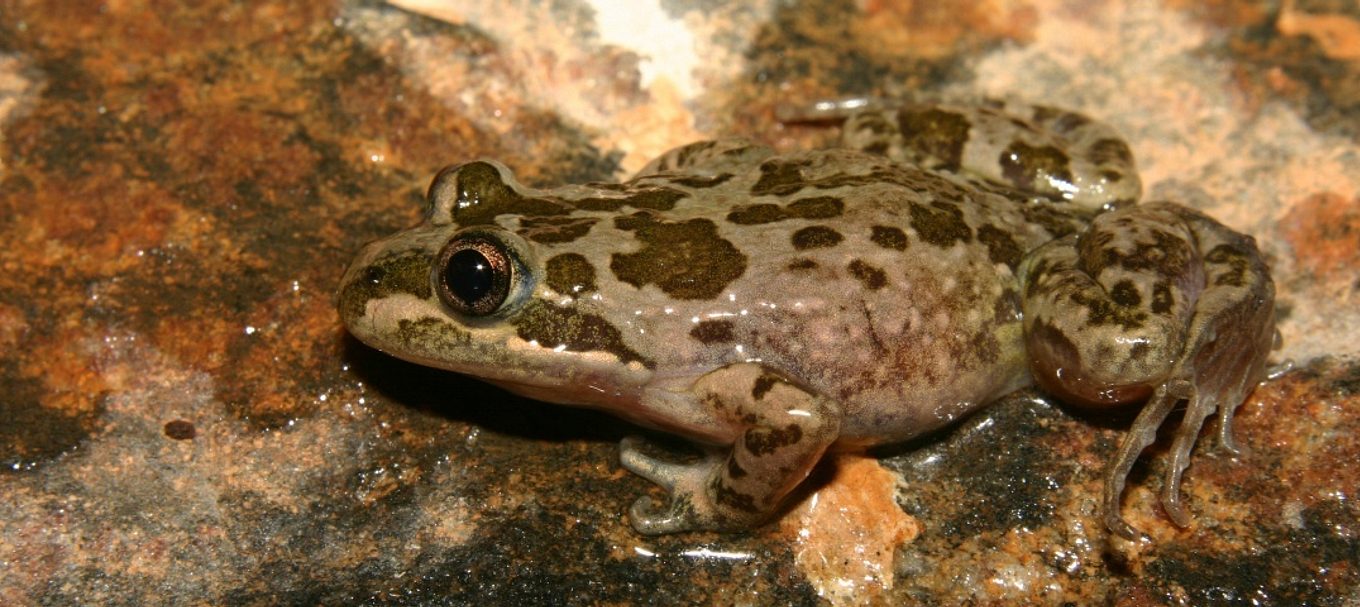
5 fascinating frogs to listen out for if you live in South Australia
Learn about local frog species, their calls and how they are a good indicator of a thriving, healthy ecosystem.
Did you know you can identify frogs by the sounds they make?
Each species has its own unique song, from croaks, barks, whistles and bleats. Learn how you can help the environment by taking an interest in the frogs that live near you.
Every year, March 20 is World Frog Day, and it's a great opportunity to raise awareness about the importance of frogs and the role we can all play in supporting suitable ecosystems to help them survive.
Frogs are highly sensitive to changes in their environment, including pollution, habitat destruction and climate change - which is why it’s so important to monitor where they live, as it reveals a bigger picture about the natural world around them.
If frog populations start to decline, it might be a sign of habitat degradation. The good news is, if they’re living in your backyard, you can be more assured that your garden's ecosystem is pretty healthy.
So next time you hear frog sounds, listen out and see if you can spot any of these.
1. Bibron's toadlet (Pseudophryne bibroni)
Between February and August listen out for the call of Bibron's toadlet.
The lifecycle of this rare frog is a little different to other frogs, in terms of the way eggs are laid and hatched.
Bibron's toadlets lay their eggs on damp leaves or grass, such as in a dry creek bed, or in a boggy area that’s likely to be flooded, rather than directly in the water.
Tadpoles hatch from the eggs before they start growing legs and then continue to grow – but only if there has been enough rain to flood the area and cover the egg in water.
Until that point, the growth of this little tadpole basically stagnates. If the area doesn’t provide enough water, the egg will dry out and the tadpole will die.
It can take six months for a fully grown frog to emerge, in comparison to the common froglet, which takes about a month.
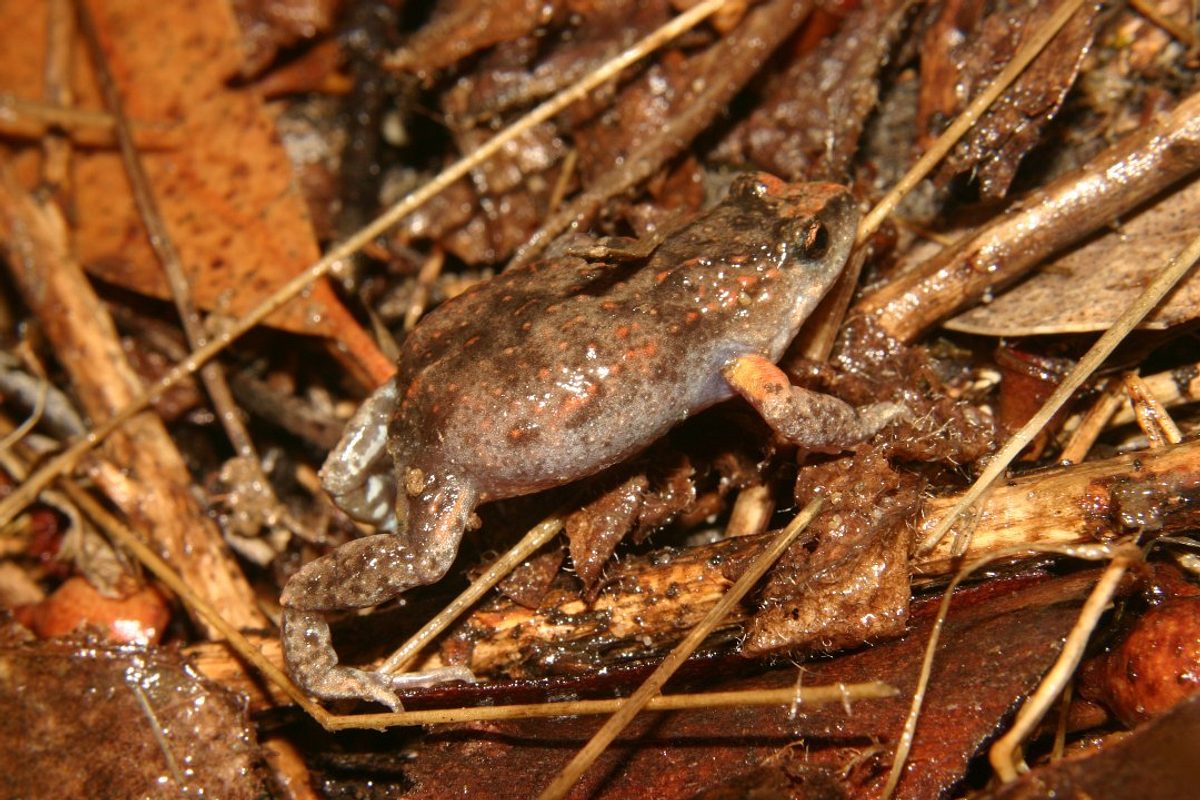
2. Brown tree frog (Litoria calliscelis - Litoria ewingii - Litoria sibilus)
Did you know there are 3 different species of Brown tree frogs in South Australia?
The most common species is the Mount Lofty Ranges tree frog (Litoria calliscelis) which is widespread over the southern Flinders Ranges, through the Mt Lofty Ranges, Murray River and the lower lakes. Down in the South East, the second species is referred to as the Brown tree frog (Litoria ewingi).
The third kind is found on Kangaroo Island and is called (unsurprisingly!) the Kangaroo Island tree frog (Litoria sibilus).
If you hear a frog call at night that sounds like a cricket, it could be the croak of a brown tree frog.
Look out for a dark brown, grey or creamy-fawn creature with a brown stripe from its nose to the top of its shoulders.
The presence of this frog species in your garden can be great for your plants, as it can help control pests and insects. But if you want to encourage them to live in your garden for good, build a pond!
Avoid spraying chemicals in your garden and control your pets – especially cats. In fact, keeping your cat indoors is the best option for all native animals and can be beneficial for your feline friend too.
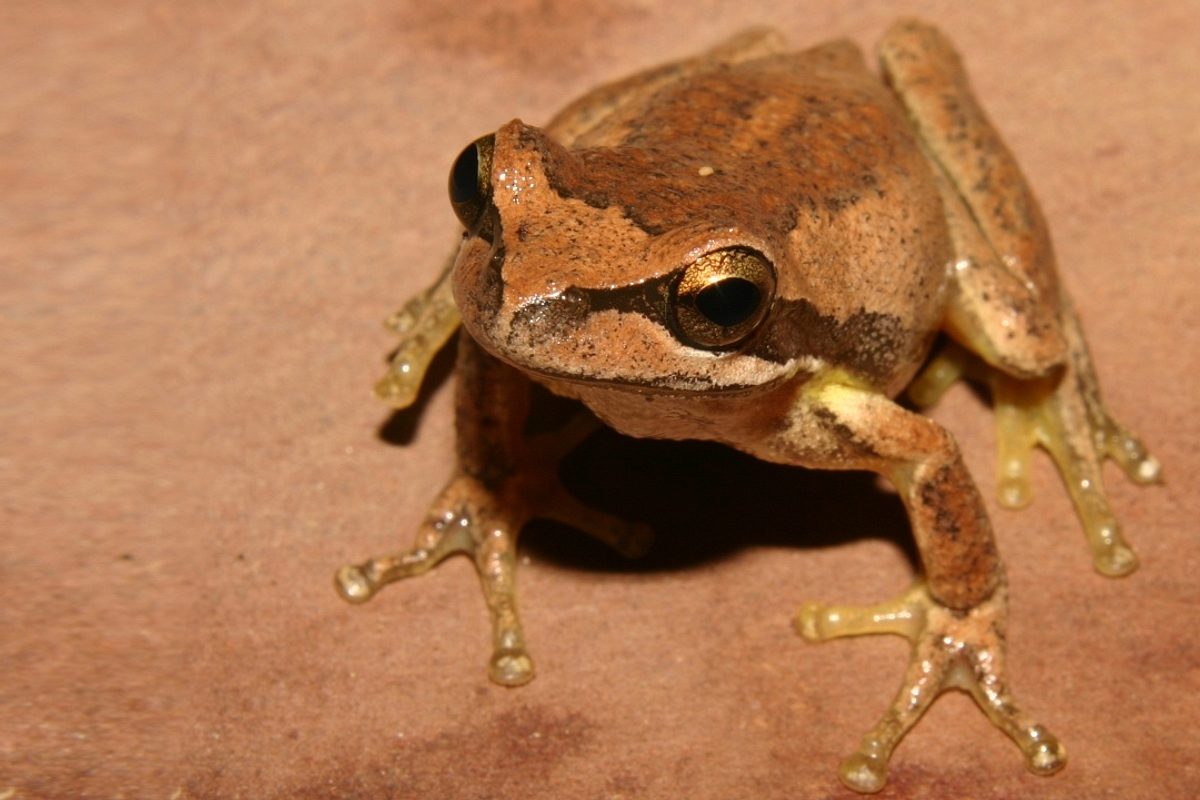
3. Eastern banjo frog or Pobblebonk (Limnodynastes dumerilii)
Have you ever wondered what that unpleasant sound is, keeping you awake at night? It could be the Eastern banjo frog or Pobblebonk.
Its song is similar to a banjo string being plucked, except it's out of tune and the player has no sense of rhythm!
The Eastern banjo frog usually lives underground depending on the season and your location. In, spring and early summer they come out to find a mate to breed with– so listen out for them.
A pair of Pobblebonks can be responsible for about 4000 eggs, with tadpoles hatching after a week or so.
In South Australia, Bull frogs can be found in the Central Districts, Mount Lofty Ranges and Adelaide Plains, Eyre Peninsula, Flinders Ranges, Kangaroo Island, Murray Valley, North East, South East and Yorke Peninsula.
Fun fact:
Limnodynastes (see its scientific name) is of Greek origin and means ‘Lords of the marshes’.

4. Spotted marsh frog or spotted grass frog (Limnodynastes tasmaniensis)
Another ‘Lord of the marsh’ is the spotted marsh frog, which can be grey, green or brown with spots. It has three distinct call types hailing from the north, south and west of SA.
During the day, these frogs generally like to hide in grass or reeds and usually lay their eggs in a foam nest made by mixing air into the jelly as their eggs are laid.
The distinctive call of the spotted marsh frog has been likened to a toy machine gun. It's the male of the species that makes this noise, often while he’s floating in water.
In the same way language can vary from one part of a country to another, spotted marsh frogs in different areas of South Australia have different calls, depending on whether they’re from the north, south or west.
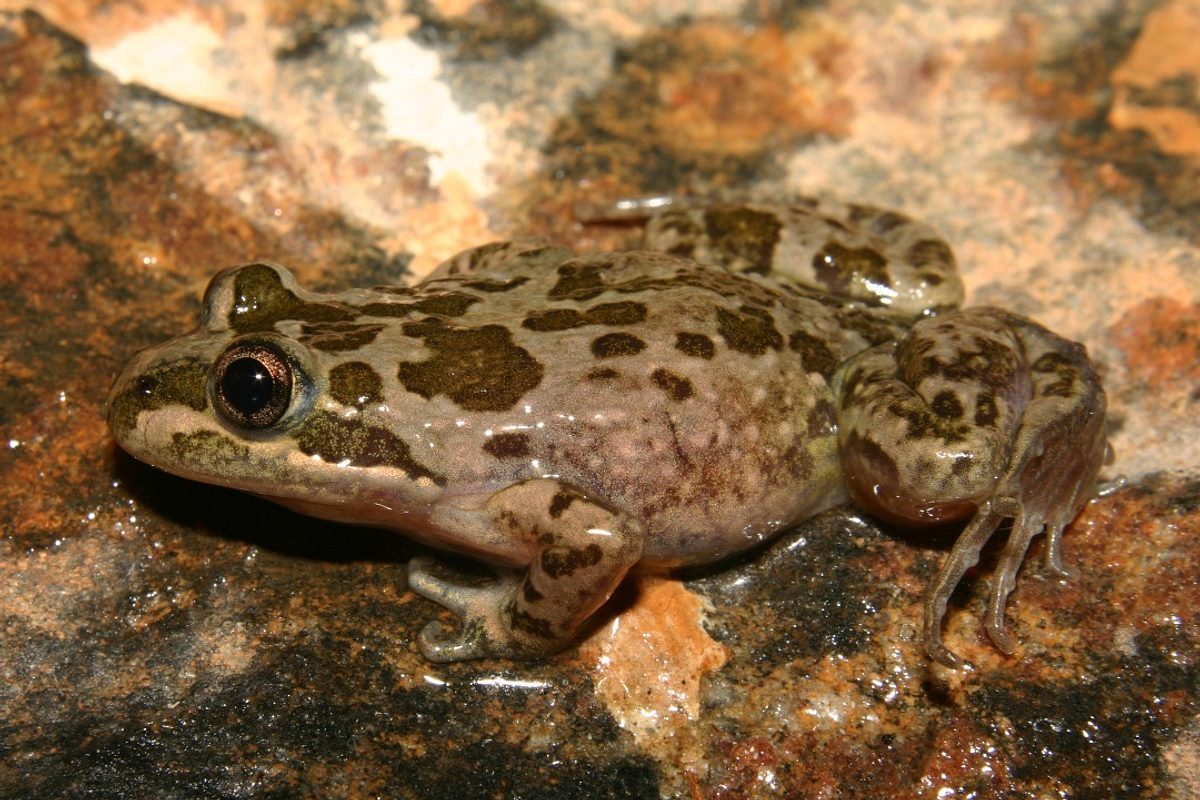
5. Painted frog or burrowing frog (Neobatrachus pictus)
Keep your eyes out for this burrowing frog, with its striking looks and cat-like eyes. But first, familiarise yourself with how the painted frog looks and sounds.
These frogs have no specific site preferences - living in South Australian woodlands, mallee, open and disturbed areas. They are found on the Adelaide Plains, in the Mount Lofty Ranges, Eyre Peninsula, Kangaroo Island, Flinders Ranges, Murray Valley, Nullarbor Plain, South East and Yorke Peninsula.
The painted frog has a ‘spadefoot’, or a ‘metatarsal tubercle’, which helps it dig into the ground. You might have assumed this frog burrows into the ground head-first, but it actually goes bum-first, in a corkscrew-like motion.
During breeding season, the males get little spikes all over their body, which are likely used for fighting.
Do you think every frog is good at jumping? Not so! The painted frog lacks all talent for jumping, so it simply 'plops' around. Instead of hopping away in the face of danger, this clever frog puffs itself up - fooling predators into thinking it's too big to fit in their mouths!
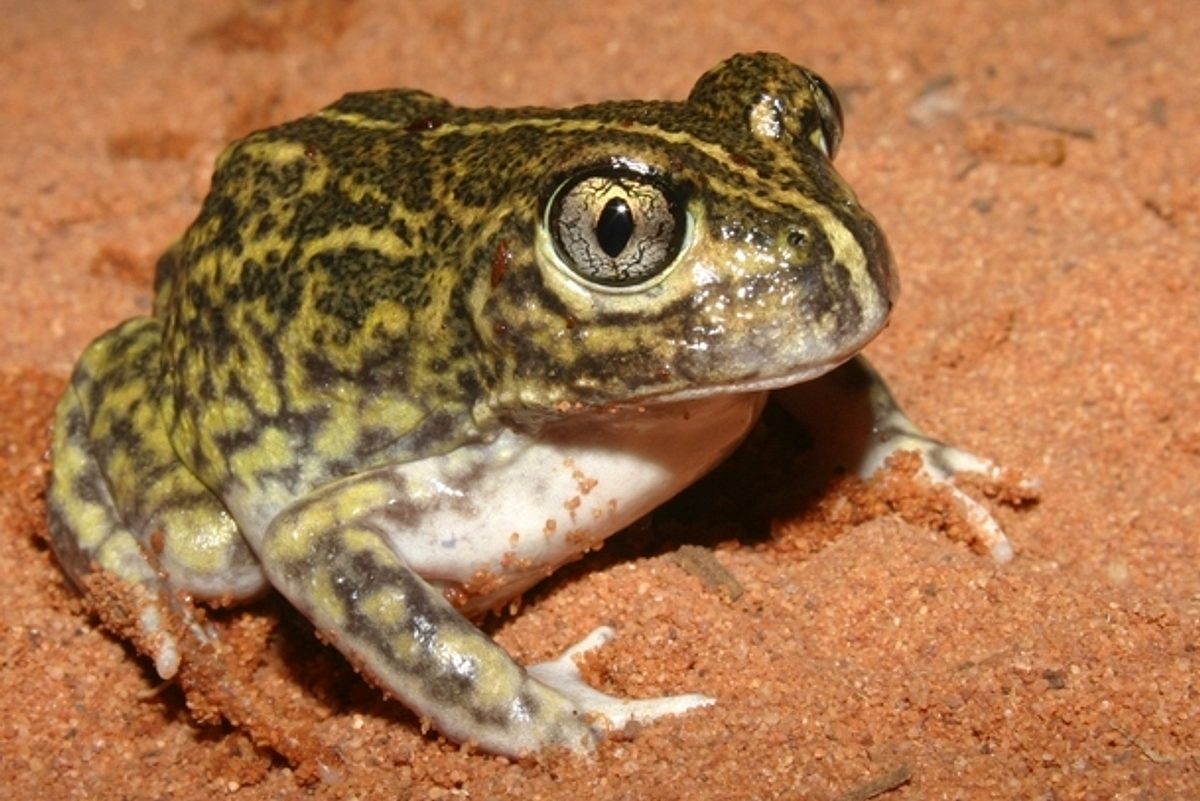
Want to help collect data about frogs?
Whether you’re already keeping tabs on your frog population or we've just sparked your interest, why not visit FrogWatch SA?
Join a community of frog lovers who record local frog calls. After being identified by experts, records are entered into a database.
This invaluable data helps to support decision-making surrounding native populations.
By tracking frogs in your area, you'll join a passionate community helping to protect South Australia's precious ecosystems and native wildlife.
(All images courtesy of Steve Walker)





